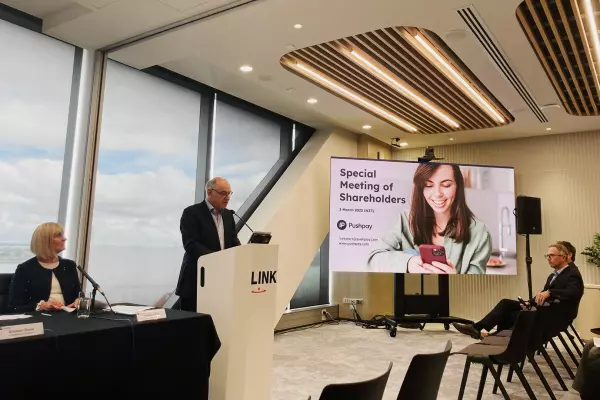In the midst of his gap year in Europe, Jonathan Kaweka* called his parents, Ian and Fay, and told them he had decided to forgo his plan to pursue medicine and instead study engineering in order to carry on the family business.
“I thought he was nuts, frankly. I would’ve much rather he’d been a doctor,” Ian says.
Ian and Fay run an engineering firm in the Waikato. It started as a two-person onsite installation operation in the early 1990s and now employs more than a hundred staff at its own fabrication and design facility.
Jonathan says while the business was always a central part of life for him and his two sisters – he joked the firm was like a fourth sibling – none of them had planned to take on roles in it.
“If anything, Mum and Dad steered us the other way,” he says.
Despite the gruff tradesman bluster, Ian admits he held some hope his kids would pick up the mantle.
“In the back of your mind, you have a family business and you’d like your kids to be involved, but we’ve never wanted that to be something we influenced,” he says.
Jonathan was the first to express a desire to carry forward the family business.
His younger sister had told her parents in no uncertain terms that she had little interest in the company, given she had found her calling in the farming sector.
His other sister studied commerce, a skill set that could be relevant to running and growing the business, but hasn’t felt any call so far to join it.
Still, Ian knows the succession process can be fraught, and so the family are trying to move forward with as much communication and openess as possible.
He says a close friend of his owned a utility-install company that imploded when he tried to hand the reins on to his four sons.
“All hell broke loose. It took a very successful third-generation business and completely and utterly destroyed it.”
This personal experience about how things can quickly fall apart showed Ian the need for a clear and defined methodology for how succession would work.
For the Kaweka family, the burden is on the children to prove they have the chops to run the show.
“Jonathan really has to earn his stripes; he is not here just because he is our son,” Ian says. “Ultimately, he’ll be judged by his first name, not his last.”
Sure enough, Jonathan calls his parents by their first names when at work. When he sits at the boardroom table with them, it is easy to forget this is a father-and-son relationship, with all the complexities that brings.
Love and money make a potent blend, which may be why only 30 percent of family businesses are ever handed down to a second generation, and only 10 percent to a third.
A survey of family firms conducted by PWC in 2016 found more than half had no plan for handing the business down to the next generation. This was identified as one of the most pressing challenges for such enterprises over the following five years.
Philip Pryor, founder of Family Business Central, says the “woeful” succession rates for family businesses are leading to companies being sold needlessly, just because no transition plan has been communicated.
He says founders shy away from talking about succession because they are reluctant to discuss the inevitability of their own death or to risk kicking off a family feud about who should get control.
Some are unwilling to face the possibility their children may be morons who would run the business into the ground; others worry their offspring may quickly eclipse them.
“Founders of businesses don’t want to retire,” Pryor says. “They are smart, driven people who are terrified of being bored and even more terrified of being irrelevant.
“But what are they going to do? Keep running the business and hope they become the first person in history to live forever?”
Pryor tells a story of a father who suddenly decided to hand his entire business to his eldest son with barely a word of warning to the rest of the family. The fallout from that decision has been rippling out for a decade and much of the family are no longer on speaking terms.
The father once exclaimed in tears that he “never started the business to tear his family apart”.
A family business mixes the two most valuable things in a person’s life; if things turn bad, losing the business will be the lesser loss.
 Philip Pryor, founder of Family Business Central
Philip Pryor, founder of Family Business Central
History is littered with bruised family businesses that let problems brew in silence for too long. Many ugly courtroom battles could have been avoided by a frank family meeting at an earlier date.
Hugh Green was a remarkable man who left his family a remarkable legacy,” French wrote in her ruling. “He was generous and it was clear from the evidence that he wanted the wealth he created to be a positive thing and a force for good.
During the hearing, both sides professed to know Hugh’s wishes. But one thing is beyond all doubt. Hugh would not have wanted to see the children he loved embroiled in wasteful and destructive litigation.
Green, an Irishman who arrived penniless in New Zealand in 1951, built his wealth through construction, farming, and property investment. His eldest son John clashed personally with younger sister Maryanne, who had helped run the Green empire, and pressed his father to remove her from Green Group trusts in his will.
Hugh Green died not long after and Maryanne spent years fighting to keep some control of a business to which she had dedicated much of her life.
Even after he had been diaganosed with terminal cancer, Hugh continued to be the driving force in his company. Justice Helen Winkelmann, who ruled on an earlier court battle between the Green children, said this might have been why only small steps were taken towards a succession plan, echoing Pryor’s assertion that facilitating an early transition is the best way to mitigate disasters.
Pryor points to Petone-based NLC Payroll, a family business that has begun transitioning management from parents Mike Sherry and Kellie Bishell to their children, as a good example.
Son-in-law Hayden Swanson joined the company as its chief executive last year, allowing Sherry and Bishell to step into director roles.
 NLC Payroll's Kellie Bishell and Caitlin Sherry
NLC Payroll's Kellie Bishell and Caitlin Sherry
The couple still work in the payroll management and consultancy firm on a daily basis, but the wheels are in motion for them to gradually exit.
A year ago, they and their family turned to Family Business Central to help them work through the nitty gritty of running the business together.
“It had elements of how we would operate the business but also how we would operate outside of the business as a family as well,” Swanson says.
There were “honest and frank discussions” about issues which he says were better to be out in the open rather than being left to boil over.
“There were things that looked like they might lead to a strong disagreement, but they never actually eventuated in that way,” he says.
“You buy into the rules because you are the one who helped create them; everyone was heard.”
Pryor says different generations need time to work alongside one another to share knowledge and evolve, so he prefers to talk about ‘transition’ rather than ‘succession’.
“It [‘succession’] implies the current generation are to clear their desks, empty their lockers and never darken the door of the business ever again,” he says.
Often the opposite is the case – having multiple generations working together is what gives family businesses their strength.
Studies have shown family operations tend to survive economic downturns better than their dispassionate counterparts. This is attributed to deep personal investment and a cautious approach to managing debt, and also to the pool of intergenerational knowledge that can be drawn from.
When Ian Kaweka, now in his 60s, imagines a future with his kids running the engineering firm, he doesn’t picture himself fishing or playing golf.
“When I say retirement, I’ll come drive a forklift for Jonathan or bloody clean the lunchroom or something, and I mean that sincerely, just to be around,” he says.
“We’ve built the foundations, so he’s got the opportunity to build the floor and the framing, and the next generation might put the roof on, and we can start to think about constructing a whare.”
*Some names in this story have been changed for privacy reasons.
This article was originally published in July 2020.














